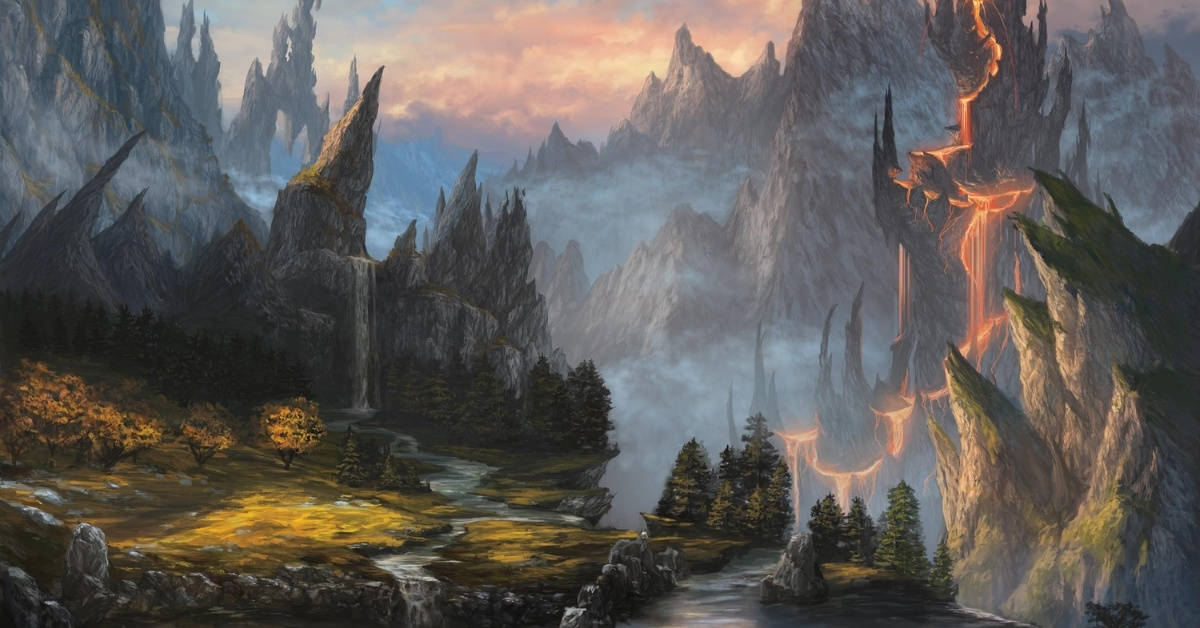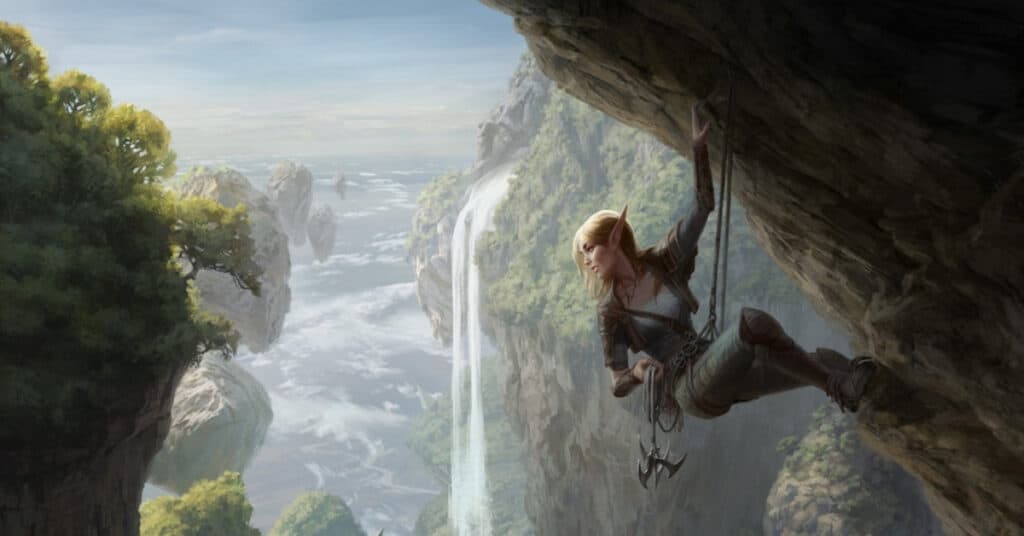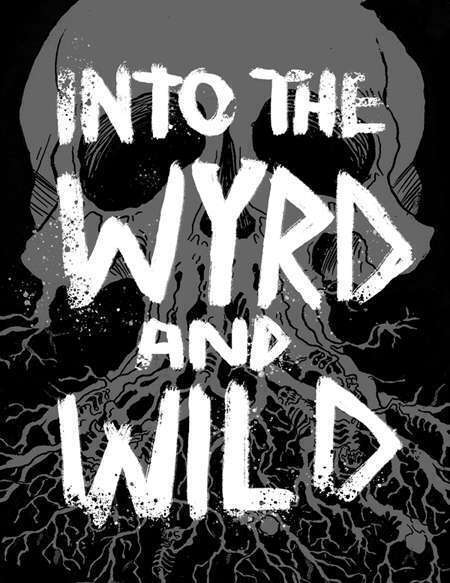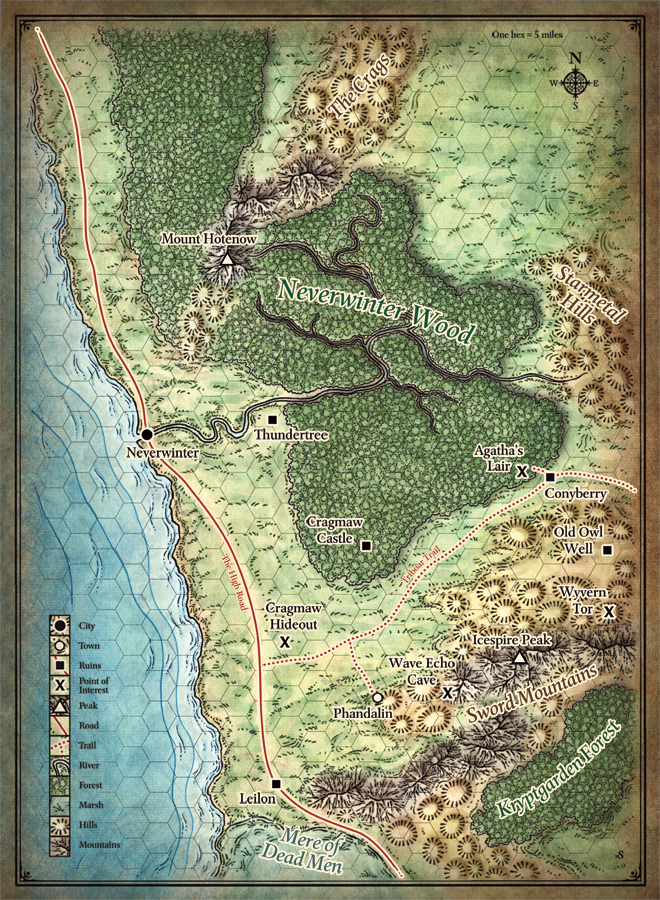Total distance per day for different travel paces?
5e SRD:Movement
Swimming across a rushing river, sneaking down a dungeon corridor, scaling a treacherous mountain slope–all sorts of movement play a key role in fantasy gaming adventures.
The GM can summarize the adventurers’ movement without calculating exact distances or travel times: “You travel through the forest and find the dungeon entrance late in the evening of the third day.” Even in a dungeon, particularly a large dungeon or a cave network, the GM can summarize movement between encounters: “After killing the guardian at the entrance to the ancient dwarven stronghold, you consult your map, which leads you through miles of echoing corridors to a chasm bridged by a narrow stone arch.”
Sometimes it’s important, though, to know how long it takes to get from one spot to another, whether the answer is in days, hours, or minutes. The rules for determining travel time depend on two factors: the speed and travel pace of the creatures moving and the terrain they’re moving over.
Speed
Every character and monster has a speed, which is the distance in feet that the character or monster can walk in 1 round. This number assumes short bursts of energetic movement in the midst of a life-threatening situation.
The following rules determine how far a character or monster can move in a minute, an hour, or a day.
Travel Pace
While traveling, a group of adventurers can move at a normal, fast, or slow pace, as shown on the Travel Pace table. The table states how far the party can move in a period of time and whether the pace has any effect. A fast pace makes characters less perceptive, while a slow pace makes it possible to sneak around and to search an area more carefully.
Forced March. The Travel Pace table assumes that characters travel for 8 hours in day. They can push on beyond that limit, at the risk of exhaustion.
For each additional hour of travel beyond 8 hours, the characters cover the distance shown in the Hour column for their pace, and each character must make a Constitution saving throw at the end of the hour. The DC is 10 + 1 for each hour past 8 hours. On a failed saving throw, a character suffers one level of exhaustion (see appendix PH-A).
Mounts and Vehicles. For short spans of time (up to an hour), many animals move much faster than humanoids. A mounted character can ride at a gallop for about an hour, covering twice the usual distance for a fast pace. If fresh mounts are available every 8 to 10 miles, characters can cover larger distances at this pace, but this is very rare except in densely populated areas.
Characters in wagons, carriages, or other land vehicles choose a pace as normal. Characters in a waterborne vessel are limited to the speed of the vessel, and they don’t suffer penalties for a fast pace or gain benefits from a slow pace. Depending on the vessel and the size of the crew, ships might be able to travel for up to 24 hours per day.
Certain special mounts, such as a pegasus or griffon, or special vehicles, such as a carpet of flying, allow you to travel more swiftly.
| Pace | Distance Traveled per . | |||
|---|---|---|---|---|
| Minute | Hour | Day | Effect | |
| Fast | 400 feet | 4 miles | 30 miles | −5 penalty to passive Wisdom (Perception) scores |
| Normal | 300 feet | 3 miles | 24 miles | — |
| Slow | 200 feet | 2 miles | 18 miles | Able to use stealth |
Difficult Terrain
The travel speeds given in the Travel Pace table assume relatively simple terrain: roads, open plains, or clear dungeon corridors. But adventurers often face dense forests, deep swamps, rubble-filled ruins, steep mountains, and ice-covered ground–all considered difficult terrain.
You move at half speed in difficult terrain–moving 1 foot in difficult terrain costs 2 feet of speed–so you can cover only half the normal distance in a minute, an hour, or a day.
Special Types of Movement
Movement through dangerous dungeons or wilderness areas often involves more than simply walking. Adventurers might have to climb, crawl, swim, or jump to get where they need to go.
Total distance per day for different travel paces?
The travel pace description and table on page 181-182 of the Player’s Handbook states that a normal travel day may contain 8 hours, and gives the following table:
Why is there an difference of 2 miles for fast and slow pace?
3 Answers 3
So that miles/day can be multiples of 6, to translate into integer values for hexes/day on kingdom and continent scales.
For kingdom maps, 1 hex = 6 miles so:
- Fast = 5 hex/day
- Normal = 4 hex/day
- Slow = 3 hex/day
For continent maps, 1 hex = 60 miles so:
- Fast = 2 days / 1 hex
- Normal = 5 days / 2 hexes
- Slow = 10 days / 3 hexes
If you’re not a multiple of 6, then it can get more complicated with the math. And while I’d love to do the math, some people think it’s not as fun as I do.
This answer ” Do the map scales suggested in the DMG tie into any rules? ” gives some insight to this. It seems to just be a matter of convenience when traveling across maps that follow the scales recommended in the Dungeon Master’s Guide (as well as, I assume, some pre-made campaigns which follow the DMG guidelines).
The book does not say, and I found no develop commentary; speculation follows:
It does make some sense that the faster pace would result in less than the expected number of miles and the slower pace would result in more than the expected number (walking faster is harder, and walking slower is easier). So that’s one small potential reason for the difference.
Also, as user Mathaddict pointed out in their answer, it is likely so that all the numbers are divisible by 6, making them far more useful for hexagonal grids.
And that’s about all I can think of. The only other thing to I would note is that these are all approximations anyway, and not very good ones at that:

Here is the DnD Beyond version of the table:
The “Distance per Hour” entries are all rounded down from what we would calculate using the “Distance per Minute” entries (4.54, 3.41, and 2.27 miles).
Furthermore, if we take the 400 foot pace and extend it to 8 hours, we would get 192,000 feet, or 36.363636 miles.
Similarly, with the normal pace of 300 feet, we’d actually get 27.272727 miles.
And with the slow pace of 200 feet, we’d get 18.181818 miles.
This isn’t any sort of reason for why the numbers are wrong, I’m just pointing out that even if they were “right” going off the “Distance per Hour” entries, they would still be wrong going off the “Distance per Minute” entries. More accurate Distance per Day entries would likely be 36/27/18
A Guide to Overland and Wilderness Travel in DnD 5e for Players and DMs

© Wizards of the Coast by Alayna Danner
Sometimes – the DM says, smugly – the destination is the journey.
While Dungeons & Dragons is ostensibly a game about descending into crypts, caves, and castles to fight monsters and (hopefully) make it out alive with as much shiny loot as you can carry, what about getting to the dungeon in the first place?
Whether you want your game of D&D 5e to feel like it’s taking place in a vast, living, breathing world where danger lurks around every tree or would rather sweep all that tedious mucking about in bandit-infested wilderness to one side and get right to the good stuff, all dungeon masters and players should at least give some thought to travel and how it works.
Welcome to our guide to traveling through the wilderness in D&D 5e.
This guide is going to break down how wilderness travel works, some of the different ways you can approach travel in your games, and some of the different types of maps dungeon masters can use to influence the way traveling through your world feels.
Note that while this guide touches on the concept of random encounters, that’s a much bigger can of purple worms than we have time to tackle in full today, so watch this space, I guess?
Table of Contents
How Does Overland and Wilderness Travel Work in DnD 5e?

© Wizards of the Coast by Anna Steinbauer
As with many elements of D&D 5e, the exact procedure for traveling through the wilderness is, ultimately, up to the DM.
And, as with all things left up to the DM, the only right answer is “whatever works for you, your players, and the type of campaign you want to run.”
Some DMs love a super-granular crawl through monster-infested forests and mountains, meticulously tracking rations, desperately foraging for nuts and berries, and spending nights huddled together, staring out into the gathering darkness for the telltale flash of a hungry monster’s eyes in the firelight.
Others choose to handwave travel completely.
Maybe running a wilderness survival simulator holds no interest, or perhaps they know they only have three hours to get through this dungeon before everyone has to go to bed, and they’ll be damned if the party spends two of those hours falling into swamps and getting chased up a tree by an angry owlbear.
To each their own.
Most games of D&D 5e tend to fall somewhere in the middle with the DM cherry-picking the travel rules that they find interesting or useful and skipping over the rest or perhaps choosing on a case-by-case basis.
An adventuring party’s first journey through a notoriously treacherous swamp might be fraught with peril, Survival checks, and wandering monsters.
By the time the party has leveled up, made the journey half a dozen times, and paid the local Baron to clear a road through the swamp, they may not have to roll at all.
Travel Pace in 5e
When walking across open ground, a party of characters can move at a normal, fast, or slow pace, which determines how far they can travel per day as well as how well equipped they are to spot potential threats.
| Pace | Distance per Minute | Distance per Hour | Distance per Day | Effect |
| Fast | 400 feet | 4 miles | 30 miles | -5 penalty to passive Wisdom (Perception) scores |
| Normal | 300 feet | 3 miles | 24 miles | – |
| Slow | 200 feet | 2 miles | 18 miles | Able to use stealth |
Adventurers can travel for up to eight hours per day; anything longer than that and you run the risk of accumulating levels of exhaustion. Deciding to continue for longer than eight hours is called a Forced March.
For each additional hour of travel beyond eight hours, the characters cover the distance shown in the Hour column for their pace.
However, at the end of each hour of travel beyond eight, each character must make a Constitution saving throw. The DC is 10 + 1 for each hour past eight hours. On a failed saving throw, a character suffers one level of exhaustion.
Marching Order
Whether you’re moving through cramped dungeon corridors or tracking a party of orcs across open plains, the DM may call on you to describe your party’s marching order.
This means you choose who walks in front; who’s second, third, etc.; and which character is bringing up the rear.
A party’s marching order usually determines who gets to make perception checks to notice things ahead of or behind the party.
The character (or characters, if there’s enough room for multiple adventurers to travel abreast) in the front rank usually makes Survival checks to navigate, detect approaching monsters, and spot hazards or traps.
If the party is being followed (or hunted), the character at the back is usually the one who makes the Perception check to notice.
Getting Lost
A party moving slowly is also less likely to become lost.
Whenever the DM decides that the party – because they were too cheap to hire a guide, neglected to buy a map, or are just somewhere that no one has ever been before – is running the risk of becoming lost, they can call on the party’s navigator (usually the character at the front of the marching order) to make a Survival check.
The DC is determined by the terrain through which the party is traveling.
| Terrain | DC |
| Forest, jungle, swamp, mountains, or open sea with overcast skies and no land in sight | 15 |
| Arctic, desert, hills, or open sea with clear skies and no land in sight | 10 |
| Grassland, meadow, farmland | 5 |
The check made by the party’s navigator is modified by the characters’ Travel Pace. A slow-moving party gets a +5 bonus to their Survival check, and a fast-moving party gets a -5 penalty.
Rangers: Natural Explorers in Their Favored Terrain
One of the best ways to mitigate the dangers of traveling through the wilderness is to make sure you have a ranger in your party – either by having one as a player character or hiring one as a retainer.
All rangers are familiar with one (or more) type of natural environment and gain a host of bonuses when traveling and surviving in that environment.
Rangers can choose a terrain from arctic, coast, desert, forest, grassland, mountain, swamp, or the Underdark.
While traveling in their favored terrain, rangers get expertise (doubling their proficiency bonus) when making Wisdom and Intelligence checks related to that environment as well as the following benefits:
- Difficult terrain doesn’t slow your group’s travel.
- Your group can’t become lost except by magical means.
- Even when you are engaged in another activity while traveling (such as foraging, navigating, or tracking), you remain alert to danger.
- If you are traveling alone, you can move stealthily at a normal pace.
- When you forage, you find twice as much food as you normally would.
- While tracking other creatures, you also learn their exact number, their sizes, and how long ago they passed through the area.
Traveling Over Difficult Terrain

© Wizards of the Coast by Daria Khlebnikova
The travel speeds listed above assume the characters are traveling over relatively unobstructed terrain like paved or dirt roads, rolling plains, or light forest.
However, traveling through difficult terrain, like swamps, thick forest, mountainous areas, or anywhere else where the going gets tough, halves your party’s movement speed in the same way that moving across difficult terrain during combat costs 2 feet of movement for every 1foot traveled.
Mounts and Vehicles
Mounts, like horses, camels, giant goats, or anything else your party’s +8 Animal Handling ranger can stick a saddle on, can travel at double walking speed for about an hour.
Anything beyond that and the mount needs to start making saving throws to avoid exhaustion.
Some mounts are specially adapted to their environments and, I would rule, negate any difficult terrain penalties imposed by their specific terrain.
A giant mountain goat mount, for example, would allow an adventurer to move through rocky, vertical terrain as though it were flat land. Need to get through a fetid swamp in a hurry? Did someone say riding alligators?
Animals can also be used to pull vehicles over land (and sometimes water – did someone say Alligator Water Chariot?).
While this is no quicker than walking, the benefit here is how much even a simple horse and cart can increase your carrying capacity.
An animal pulling a carriage, cart, chariot, sled, or wagon can move weight up to five times its base carrying capacity, including the weight of the vehicle.
If multiple animals pull the same vehicle, they can add their carrying capacity together.
Resting in the Wilderness
Apart from some edge cases like the warforged, all characters need to periodically take a rest, no matter if they’re topped up on hit points and spell slots.
During travel, it’s assumed that a party will need to take a short rest (one hour) every four hours, and a long rest (eight hours) at the end of eight hours of travel.
A party taking a long rest will also need to make camp as well as consume food and water in order to gain its benefits. In the wilderness, this can be easier said than done.
Foraging and Other Actions While Traveling
There are plenty of things your characters can (and probably should) do while traveling, including navigating, forage for food and water, map the surrounding area, and track creatures.
Usually, a party traveling slowly will do better at these activities, and a fast-moving party will act at a serious disadvantage.
Navigating not only helps you find your way to the journey’s destination, but also helps avoid environmental hazards, like quicksand, thin ice, or desecrated ground crawling with the undead, by making a Survival check.
Foraging allows you to find the food and water necessary for survival once your party’s rations run out.
A character who forages for food keeps their eyes peeled for vegetation, water sources, and game that can be hunted by making a Survival check. The DC of this check is set by the abundance of available food in the region.
| Food and Water Availability | DC |
| Abundant food and water sources | 10 |
| Limited food and water sources | 15 |
| Very little, if any, food and water sources | 20 |
Lush farmland and forests might yield an abundant supply of wild mushrooms, berries, fresh water, and rabbits to hunt.
By contrast, players trying to make their way through arctic tundra or scorching desert could end up going for days at a time without glimpsing the slightest trace of food or water.
Mapping the surrounding area involves a character taking the time to survey the surrounding landscape, noting down landmarks and geological features.
If the party later becomes lost (or travels through the same location later) a map can be a huge help in getting back on track.
Tracking quarry across the wilderness – whether the pursuit is the whole point of the journey or just a momentary diversion in search of food – relies on a player making one or more successful Survival checks.
The DM could set any number of DCs for the roll and require the player to roll multiple checks.
The difficulty of a check and the frequency with which the player has to roll could depend on any number of things, from the size of the quarry and the local terrain (tracking a giant’s progress through the forest requires little more than checking for huge footprints and broken branches and may not require a roll at all; following a displacer beast through its native jungle is a task so challenging that it verges on folly) to whether or not the party’s prey is aware of its pursuers.
A monster that’s just going about its business might only prompt a roll once per day, whereas a creature that’s actively trying to avoid detection could prompt a new roll each hour.

© Wizards of the Coast by Sarah Finnigan
Weather
The weather is a vital consideration when moving through the wilderness. Climbing a mountain on a balmy summer afternoon is a very different prospect from attempting the same climb in the midst of a raging snowstorm.
The DM can either choose the weather to suit the environment and their campaign (trekking across cursed marshlands? It’s now raining frogs, which I guess eliminates the need for a foraging roll for the day) or roll on the table below.
| d20 | Temperature |
| 1–14 | Normal for the season |
| 15–17 | 1d4 × 10 degrees Fahrenheit colder than normal |
| 18–20 | 1d4 × 10 degrees Fahrenheit hotter than normal |
| d20 | Wind |
| 1–12 | None |
| 13–17 | Light |
| 18–20 | Strong |
| d20 | Precipitation |
| 1–12 | None |
| 13–17 | Light rain or light snowfall |
| 18–20 | Heavy rain or heavy snowfall |
Some DMs like to roll for weather changes as frequently as every hour, whereas some will just roll at the start of the day and let the result ride.
It’s also worth noting that some spells and character abilities, like Druidcraft, can allow characters to predict the weather as much as a day in advance.
Homebrewing the Wilderness
Plenty of DMs find the basic rules for weather (and wilderness travel in general) to be a little sparse. Thankfully, there are a ton of great options out there from the D&D community.
Try this free ruleset by KibblesTasty for a more in-depth set of options.
You should also check out Into the Wyrd and Wild by Wet Ink Games, which is absolutely overflowing with house rules for wilderness survival.
For the DM looking to make the wilderness into a truly scary place with lots of rich, rewarding gameplay, it’s got rules for weather, moon cycles, hunting and butchering monsters, and a whole bunch of super creepy monsters, spells, items and wilderness locations.

Source: Into the Wyrd and Wild (Revised Edition), Wet Ink Games
Montages vs. Detailed Travel – Which One To Use and When
When running a journey through the wilderness, whether that means a week-long trek through a dark forest, scaling a mountain, or journeying through a vast cavern complex, the dungeon master has to decide whether they want to handwave the entire process, run a punishing test of survival over multiple sessions, or pick something somewhere in between.
The Dungeon Master’s Guide offers two suggestions for running wilderness and overland travel: the montage and the hour-by-hour approach.
Using a montage – like in film and TV – allows you to effectively gloss over large chunks of time while still reminding your players that their characters are undergoing a much more grueling time than sitting around the gaming table with a bag of chips and some Code Red Mountain Dew.
In a few sentences, you can describe sweeping vistas, moody forests, and the day-to-day experiences of the adventurers.
Just remember that no matter how much you’d rather be down in the dungeon throwing waves of goblins at your players, nailing a few key details of your montage can do a lot to help make your world feel real and evocative to your players.
While saying “you walk for three uneventful days” is perfectly serviceable, I guarantee that a few well-chosen sensory details are going to do a lot to help reinforce the fiction for your players.
“You trudge for three days through driving rain and bitter cold, your breath rising in plumes before your faces. Your nights are spent huddled beneath what sparse cover you can find in these accursed hills, watching the darkness for signs of goblins – or worse.
The way is hard, rising again and again in a series of switchbacks and sharp doglegs as you venture deeper into the mountains. On the evening of the third day, tired, hungry, soaking wet, you arrive at your destination.”
Sure, it takes maybe 60 seconds longer, but your players are much more likely to feel immersed in the events. The wilderness feels more real to them now, and they’re more likely to play their characters accordingly.
If you (and your players) like wilderness travel, then using the rules in the previous sections to run the game hour-by-hour is a great way to go.
If you don’t want to get quite so nitty-gritty with it, you can always run each day in four-hour chunks, called “watches.”
Just like a montage, however, make sure that you hit a few sensory descriptors with each change in weather, terrain, and time of day.
These help orient your players and mitigate the risk that travel can start to feel a little too much like a board game – which, interestingly enough, it was in 1st edition D&D.
You actually had to buy a totally unrelated board game (which you can still find online if you’re into that sort of thing) that wasn’t even made by TSR, which you played instead of D&D until your characters reached the dungeon.
Random Encounters
We’ll go into random encounters in detail in a future article, but in essence, as you travel through the wilderness, random encounters simulate the chances of bumping into its various occupants.
The DM sets an increment of time (some use every hour, some use four, and some just roll once or twice per day) and rolls a d20 whenever their chosen duration is up.
Random encounters can range from randomly determined monsters going about their business to friendly NPCs or even hooks to new adventures, depending on what the DM chooses to generate.
Adventurers moving at a fast pace are more likely to be surprised by a random encounter, and a slow-moving party will usually have a chance to stealth around it or lay an ambush if they choose.
Mapping the Wilderness
Lastly, we’re going to take a look at some of the ways to map the wilderness.

© Wizards of the Coast by Scott Murphy
“Freestyle” Travel
This is probably the simplest option for dungeon masters who want to gloss over wilderness travel – especially when the players’ destination and the intervening lands are well known to them.
Freestyle mapping involves looking at the party’s location on your world or area map, plotting how far it is away from their intended destination in miles, and using their travel pace to figure out how many hours, days, or weeks the journey will take.
Maybe make note of the points at which they’ll pass by any other landmarks so you can describe them, and you’re good to go.
Hex Crawls
The “classic” flavor of D&D map, and ideal for games that focus on exploration and a more involved approach to wilderness travel.
A hex-map breaks up the world into six-sided spaces, which tend to be either 1 mile, 6 miles (the classic scale for a hex crawl), or larger for world maps.
Some hexes contain pre-written content, and entering an empty hex usually prompts a roll for a random encounter. Players then have the option of taking an action to explore, forage, or map their current hex or move on.
My favorite thing about hex crawls is that when the players get lost, you can roll a d6 and count round their current hex to determine the direction in which they move.

Point Crawls
This is a slightly more abstracted version of a hex crawl that has found favor with DMs looking to emphasize more liminal or unmappable environments.
Point Crawls contain several “points” of interest, which could be towns, dungeons, or other landmarks, with lines drawn between them marking out the distance and time required to make that journey.
When the party travels between two points, they could elect to travel any way they like – road, off-piste, or by flying golden barge, and the method of travel is then used to modify their expected travel time.
If you like the idea of including wilderness travel in your game but don’t want to muck about poring over maps to figure out if that tiny drawing of a hill would count as difficult terrain, the mixture of abstraction and mechanical crunch that point crawls provide might be for you.
- About Author
- Latest Posts
I played my first tabletop RPG (Pathfinder 1e, specifically) in college. I rocked up late to the first session with an unread rulebook and a human bard called Nick Jugger. It was a rocky start but I had a blast and now, the better part of a decade later, I play, write, and write about tabletop RPGs for a living, which is wild. I’ve spent years running and playing 5e (as well as PBtA, Genesys, World of Darkness, and Forged in the Dark games), but I’ve recently been drifting further in the direction of old school renaissance (OSR) systems like Into the Odd, Mausritter, and Old School Essentials.
Source https://www.dandwiki.com/wiki/5e_SRD:Movement
Source https://rpg.stackexchange.com/questions/176482/total-distance-per-day-for-different-travel-paces
Source https://blackcitadelrpg.com/overland-travel-5e/